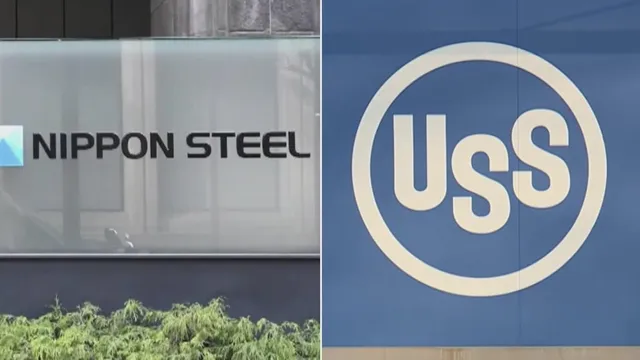
Nippon Steel invests $11 billion in U.S. Steel to secure American jobs
2025-06-18 18:33- The deal between U.S. Steel and Nippon Steel promises to inject $11 billion into American operations over the next several years.
- Union concerns revolve around the potential impact on job security and production locations related to non-union facilities.
- Community leaders view the finalized partnership as a positive step toward sustaining employment and improving environmental standards.
Express your sentiment!
Insights
In June 2025, U.S. Steel, an American steel manufacturer, finalized a partnership deal with Japan's Nippon Steel to enhance operations in the United States. The agreement is aimed at securing around 4,000 jobs at the company's Pittsburgh headquarters while promising no reduction in steel production at the Mon Valley Works for at least a decade. The deal includes an investment commitment of approximately $11 billion from Nippon Steel, which is expected to improve the environmental standards and boost community development within the Mon Valley region. Senator Dave McCormick of Pennsylvania expressed optimism about the deal's implications for national security and economic stability, stating that it assures production continuity and workforce stability for American steel interests. However, concerns persist among labor unions, particularly the United Steelworkers, regarding potential future decisions by Nippon Steel that could move production outside the union jurisdictions, especially toward non-union facilities. The partnership includes terms that grant the U.S. government a
Contexts
The partnership between U.S. Steel and Nippon Steel represents a significant collaboration in the global steel industry, underscoring the importance of international cooperation in addressing the challenges and opportunities of modern manufacturing. The historical context of this partnership can be traced back to the evolution of the steel industry, which has played a pivotal role in the economic development of both the United States and Japan. U.S. Steel, established in 1901, has been a cornerstone of American industrial growth, paving the way for technological advancements and innovations in steel production. Similarly, Nippon Steel, founded in 1950, has become one of the largest steel producers in Japan, contributing to the nation’s post-war economic recovery and its position as a global economic power. The convergence of these two titans of the steel industry highlights the interdependence of resources, knowledge, and markets in an increasingly globalized economy. Throughout the decades, the steel industry has faced numerous challenges, including fluctuating demand, environmental regulations, and increased competition from emerging markets. As the U.S. and Japanese economies have evolved, so too have the strategies of U.S. Steel and Nippon Steel. The partnership has enabled both companies to share best practices, innovate processes, and improve sustainability measures, allowing them to remain competitive amid these challenges. Moreover, collaboration has fostered technological exchange, with Nippon Steel bringing advancements in steelmaking technology, particularly in high-strength steel, which has applications in automotive manufacturing and construction. In turn, U.S. Steel has leveraging its expansive market presence in North America, allowing both companies to enhance their market positions. The partnership has also significant implications for the broader steel industry. By combining resources, U.S. Steel and Nippon Steel have been able to respond more effectively to global supply chain disruptions and shifting market demands. This collaboration has not only strengthened their respective companies but has also allowed them to position themselves as leaders in environmentally sustainable steel production. As the world increasingly turns toward greener manufacturing practices, the partnership is poised to make significant contributions to reducing carbon footprints and promoting circular economies within the steel sector. Moreover, the geopolitical landscape plays a critical role in the dynamics of the U.S. Steel and Nippon Steel partnership. Both companies must navigate political relations between the United States and Japan, particularly in the context of trade policies and tariffs that can impact the steel industry. As of 2025, the partnership is adapting to these changes, emphasizing collaboration to promote mutual interests both domestically and internationally. Ultimately, the historical context of the U.S. Steel and Nippon Steel partnership is characterized by resilience, innovation, and a forward-looking approach that seeks to tackle the challenges of modern steel production while paving the way for a sustainable future.